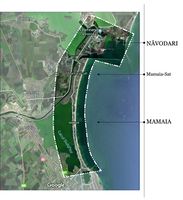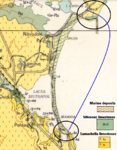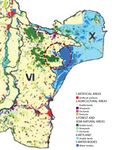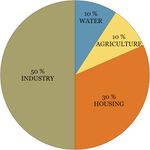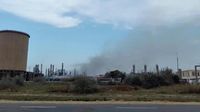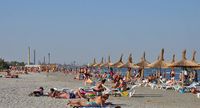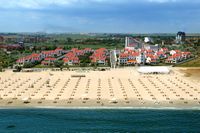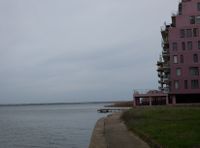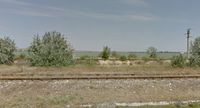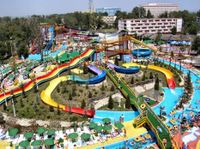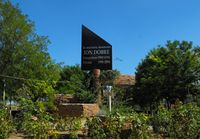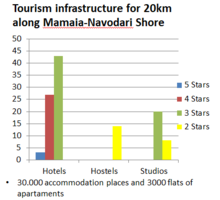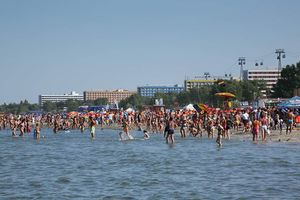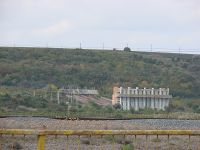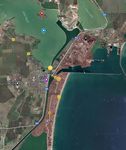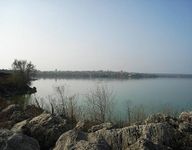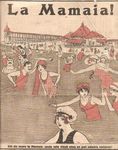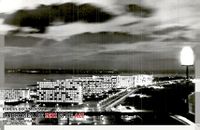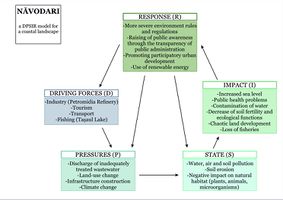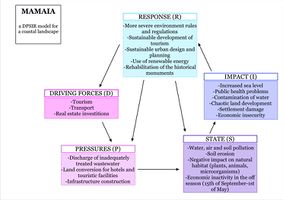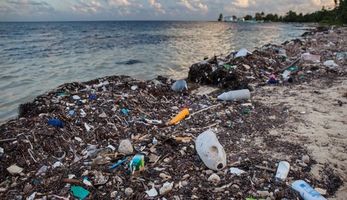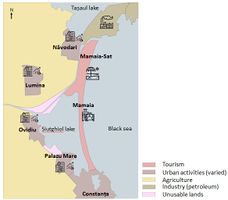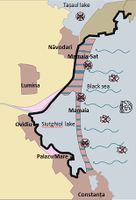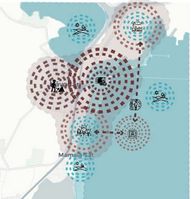Novodari-Mamaia: Difference between revisions
| Line 216: | Line 216: | ||
<gallery caption=" " widths="500px" heights="200px" perrow="1"> | <gallery caption=" " widths="500px" heights="200px" perrow="1"> | ||
File:Mapping 1 Navodari-Mamaia.jpg|''Economic activities in Năvodari-Mamaia coastal zone includes tourism, various urban activities, industry (mostly based on oil) and agriculture, which covers the largest area. There are also some areas with unusable lands.'' | File:Mapping 1 Navodari-Mamaia.jpg|''Economic activities in Năvodari-Mamaia coastal zone includes tourism, various urban activities, industry (mostly based on oil) and agriculture, which covers the largest area. There are also some areas with unusable lands.'' | ||
File:Mapping2 Navodari-Mamaia.jpg|''Urban | File:Mapping2 Navodari-Mamaia.jpg|''Urban development is mainly influenced by tourism. In the future the cities need to be connected more, but also their development should be planned and placed under limitations.'' | ||
File:Map3 Navodari-Mamaia.jpg|'' | File:Map3 Navodari-Mamaia.jpg|''The natural landscape change includes the massive erosion process (mainly due to the increasing number of buildings) and the rise of the sea level. It is necessary to reduce industrial activities and tourism to save the coastline from total erosion and shrinkage.'' | ||
</gallery> | </gallery> | ||
Revision as of 16:14, 17 May 2018
>>>back to working groups overview
Rationale
- Why do you think this case is relevant? What is your hypothesis considering the landscape challenges?
Formed of three coastal land towns (Mamaia, Mamaia-Sat and Năvodari), our study area is relevant because of the specific relations that take place between its geomorphology, its human activities and its natural habitat. These 3 subsystems and the way they interlink influences a much larger area - not only the three towns, but the entire Romanian coastal land and other Romanian cities.
Năvodari holds an essential place in the industry of petroleum, holding economical and social interests together. On the other hand, Mamaia has a touristic character, being one of the biggest and most popular seaside resort towns, but an unsteady income source, due to its inactivity in the off-season.
Location and scope
You can edit this map with the map editor
A Landscape System Analysis
A.1 Landscape layers and their system context
Geomorphology, landscape units and coastal typology
- Description of evolution, status quo and driving forces, is the coastal typology changing? Why is that? (approx 200 signs)
- add 1-2 graphical representations to the image gallery, you can add more if you like
Navodari-Mamaia coast zone could be subdivided following the morphodynamic categories, with its very specific characteristics and behavior into a “Low, accumulative coasts mostly related to the main rivers mouth zones”. (classification made by National Institute of Marine Geology and Geo-ecology).
In Navodari-port area, we can find conglomerate limestones and siliceous limestones formed in the Mesozoic Era. In Mamaia area, we can find lumachella limestones formed in the Cenozoic Era.
Along the shoreline, from Navodari to Mamaia and between the sea and Siutghiol lake we can find marine deposits formed in Holocene period.
Land use
Năvodari is a town in Constanța County, region of Northern Dobrogea, with a population of 32,400. The town formally includes a territorially distinct community, Social Group Peninsula, and administers the neighbouring village of Mamaia-Sat.
PAST SITUATION
Năvodari town was mentioned for the first time in the 15th century, under the name "The Black Village". During the communist regime the town developed as part of the industrialization program. The main practices were industry, agriculture and housing. In 1957, in the area was built USAS (Uzina de Superfosfat si Acid Sulfuric, Superphosphate and Sulfuric Acid Factory), whose construction paved the road towards the industrialization of the area and demographic growth. In 1968 the population of Năvodari exceeded 6,500 inhabitants. A law adopted that year granted the commune of Năvodari town status and placed the Mamaia Sat village under its administration. The modernization of the town began in 1975 and finished on 29 June 1979.
CURRENT SITUATION
Today, Năvodari still has an important area that develops industry, as it is known for its important car repairs factory and a Petromidia factory specialized in petrochemical products. The town has also developed in the social and cultural fields. In the city center there is a children's town, built between 1969 and 1972, vacation accommodations, and sports facilities where up to 12,000 visitors can be accommodated. Some 5 kilometres from the town there is a summer camp(the largest one in Romania), built in the past for school children. Other activities such as: sport fishing, harbor, tourism, services, recreation, public spaces, educational activities, shipping and constructions.
The town retained its main activity, industry, but in the future this activity will be majorly complemented by tourism, activity due to the positioning of the city at sea, but also the tendency to build.
Green/blue infrastructure
- What are the major potential elements of a green/blue infrastructure network? Are these likely to change/disappear? Why is that?
- You find my background material on green infrastructure in our reading list
- add 1-2 graphical representations to the image gallery, you can add more if you like
In the context of an urbanised environment, green and blue infrastructure is to be understood as all natural and semi-natural landscape elements that (could) form a green-blue network. It can refer to landscape elements on various spatial scale levels: from individual rows of trees to complete valley systems. Examples of green landscape elements are hedgerows, copses, bushes, orchards, woodlands, natural grasslands and ecological parks. Blue landscape elements are linked to water. They can be pools, ponds and pond systems, wadis, artificial buffer basins or water courses. Together they form the green-blue infrastructure.
In Năvodari-Mamaia coastal zone the major potential elements of blue infrastructure network are Siutghiol Lake (with Ovidiu island), Tașaul Lake, Corbu Lake, Poarta Albă-Midia Năvodari Canal and Aqua Magic Park. The green infrastructure elements are reprezented by hedgerows, trees, bushes and natural grasslands. Năvodari City is also known for its many green spaces, the most important being Ion Dobre Park, The Central Park and The Jilava Park. This elements representing the green and blue infrastructure are unlikely to disappear in the near future because most of them are natural landscape elements. Also, this components are important for economic growth, tourism, recreational activities and industry.
Actors and stakeholders
- Who is driving changes in this landscape? Who is affected by those changes?
- Draw a stakeholder and/or power map: Who is affected highly but with low power? Who has high power but is not affected?
The shoreline between Mamaia and Navodari is the largest and most famous resort of the Romanian riviera. Mamaia has dealt in the last years with a vast process of modernization. All tourism infrastructure offer together about 30 thousand accommodation places. Besides hotels and studios, a strong concentration of residential buildings were built in the last years, which sum up almost 3 thousand apartments. Who is highly affected, and have no power to do something? The rapid development of the tourism infrastructure is shortening the beach and causes congestion. Beaches shortening is caused by the high rate of development in the area. Another problem is the heavy traffic during the summer among with noise and air pollution, caused by cars. The main persons affected directly by that are the residents that live here all the year, and indirect the tourists in the season.
Sacred spaces and heritage
- Which places/elements hold cultural value and to whom?
Symbolic spaces: Limanul Stiutghiol, Limanul Tașaul, Năvodari Beach, "Hanul Piraților" Beach, Ion Dobre Park, Sunshine Beach, main cliff of Năvodari, "Poarta Albă" Midia-Năvodari Canal, Insula Ostrov, Petromidia, Insula Ada, Fish Marker in Năvodari(negative symbol which was even closed), all Mamaia Village, restaurants such as Cherhanaua Tașaul, the walkway near the Mamaia Village, the dock of Mamaia. All these spaces elements hold symbolic meaning for the history of Năvodari or Mamaia, cultural reasons, for the citizens, the tourists or settlement. Places such as Cherhanaua Tașaul, the walkway near the Mamaia Village, the dock of Mamaia represent a symbol for people in a way of socializing, meeting places or landmark. Spaces like "Poarta Albă" Midia-Năvodari Canal and Petromidia have an historical meaning and symbolise the main activities for Năvodari, also, the evolution and development of the area. For example, Poarta Albă is a symbol for the victims of communist, as it was a prison and labor camp attached to the construction of the Danube-Black Sea Canal.
Visual appearance and landscape narrative
- Which elements are essential for the landscape character?
The particularity of both Năvodari and Mamaia is their relation to the water. Being surrounded at the eastern side by the Black Sea and at the western side by Lake Siutghiol (Mamaia) or by Lake Tașaul (Năvodari), they act like barrier islands. This caracter is more visibile in the case of Mamaia, where the land is much narrower than it is in Năvodari. However, what strikes the visitor is the length of the beach in Mamaia, and also the slow slope of the shore when they enter the sea.
- Has the landscape been painted or otherwise depicted, when and whom? Which elements are essential?
- Which narratives exist? Who has written about this landscape or depicted it in some way?
Between the two settlements, Mamaia is the most popular, as from the beginning (in 1906) it was created as a seaside resort town - in contrast to Năvodari, which only became a touristic destination in the 1970s. Since 1906, Mamaia has been intensely promoted - first as the pearl of the Royal Romanian family and then, in the 60s and 70s as one of the great achievements of the communist systematisation program of the Romanian seaside. Being connected to the construction of the Danube-Black Sea Canal, Mamaia was also promoted through communist propaganda - postcards, artistic films and even books like Petru Dumitru's 1951 novel Drum fără pulbere [Road without Dust]
"He held his hands on the crane's command levers and moved them slightly and all of a sudden the block of stone started to swing in the air, with all its ten tons. [...] The crane pivoted, stretched its arm, and deposited the block in one of the wagons. [...] In the distance, the (Siutghiol Lake) shined. On its shimmering surface floated black caiques with curved bows, like Turkish slippers."
Even though less attractive than Mangalia or Balchik to painters and writers, Mamaia can as well be found as the subject of interwar period paintings.
Iosif Iser - "At the seaside", 1936, watercolor and ink on paper
A.2 Summary of you landscape system analysis and your development Targets
- Link back to the Sustainable Development Goals: Which goals are at risk?
Five Sustainable Development Goals that are at risk : Clean water and sanitation, Sustainable cities and development, Responsible consumption and production, Climate action, Life below water and Life on land.
For both towns the main driving forces are tourism and transport. However, what makes them act a little different as systems are the industry - which plays a major role in Năvodari - and the tourism - which, in Mamaia, is much stronger and meaningful, as the tourist flow is considerably bigger. The main pressures - land-conversion for touristic infrastructure, discharge of poorly treated wasterwater and climate change lead to soil, water and air pollution or even soil erosion - can put not only human life and settlements in danger, but also affect animals, plants and microorganisms. The impact consists in increasing sea level, contamination of water, public health problems. As for the social impact, it is more dramatic in Mamaia, where the inactivity during off-season generates economic instability and a chaotic and fast land development.
A.3 Theory reflection
- Reflect on at least three international policy documents in relation to their local landscape case
- choose one international, one European and one national document
- You can choose references from our reading list
- Scope: 250 words
Our study area is relevant because of the specific relations that take place between its geomorphology, its human activities and its natural habitat. Anthropogenic pressures: we have identified in the coastal zone that the development of the socio-economic activities such as tourism, petroleum industry, and military activities are the main problems. Năvodari holds an essential place in the industry of petroleum, holding economic and social interests together. On the other hand, Mamaia has a touristic character, being one of the biggest and most popular seaside resort towns, but an unsteady income source, due to its inactivity in the off-season. Tourism is a major source of ecological pressure in the area.
Beaches shortening is one of the main problems in the studied area due to the high anthropic activity and because of the economic agents that have extended too much, resulting in beach congestion.
A.4 References
- give a full list of the references you have used for this section
http://www.profet.ro/Panin.pdf
https://www.litoralulromanesc.ro/cazare_mamaia.htm
https://www.sciencedirect.com/science/article/pii/0264817295000429
http://www.geo-spatial.org/download/harta-geologica-a-romaniei-scara-1-200-000
https://green4grey.be/en/green-blue-infrastructure/what
http://all-about-water-filters.com/
https://turism.bzi.ro/
Phase B: Landscape Evaluation and Assessment
B.1 Assessment Strategy
- Based on the hypothesis derived from your previous landscape systems analysis you are now asked to define the goals for assessing the landscape. Your assessment is the basis for evaluating the landscape status.
- Which elements and phenomena need to be mapped, why and how?
- This a text contribution, max 250 words
The main goals for the assessment are:
1. Sustainable local economy, regardless of season (i.e. the economic insecurity specific especially to Mamaia, which doesn‘t have a functional economy – it is active only during summer, the rest of the year being off-season).
2. Controlled and planned urban development (i.e. the chaotic land use and development specific to both Mamaia and Năvodari nowadays).
3. Ameliorate the effects of the pollution generated by industry, agriculture and tourism (see the negative influence Petromidia and tourism in Mamaia have on the environment – contamination of water and increased sea level due to climate change).
The elements and phenomena that need to be mapped for Navodari-Mamaia Coastal zone are economic activities, urban development and natural landscape change. It is important to map these elements because the main risks of the area are the continue contructions, accentuated industrialization, uncontrolled tourist activities and industrial pollution. Industry has an important impact because Petromidia Rafinary, the largest Romanian oil refinery, (and also one of the largest in Eastern Europe), is located in Năvodari.
B.2 Mapping
- As defined by your assessment strategy you conduct the mapping and present your findings here
- As a minimum, at least three different themes need to be mapped, you may choose more if needed
B.3 Problem definition and priority setting
- Give a summary of the major findings of your mapping process, what are the problems/potentials identified?
- Draw a problems/potentials map
- Set priorities for the most relevant issues
Following the main findings of the mapping process, the following issues and risks have been identified: economic insecurity, urban development and pollution. Also, a lot of problems are caused by the climate change, that is a significant threat for the costal landscape, mostly, for the sacred species, the heritage and the biotope of the zone. Indifference and lack of a long-term strategy can lead to the disappearance or degradation of some areas such as: Taşaul Lake, Mamaia Village.
Based on our assessment findings, we considered the importance of prioritisation these issues and setting out key actions and goals for the planning and design process. It is important to have a long term strategy, then to develop a sustainable economy and find effective solutions, based on the estimating changes.
B.4 Theory reflection
- Please reflect the assessment and evaluation methods used based on at least three readings
- Did you encounter limitations'
- 200 words test contribution
B.5 References
- give a full list of the references you have used for this section
https://ecomareaneagra.wordpress.com/litoralul-romanesc/
Phase C – Strategy and Master Plan
C.1 Goal Setting
- Define strategic planning objectives based on the evaluation findings
- Link back to your original targets from section one and the Development Goals
- 150 words text contribution
C.2 Spatial Strategy and Transect
- translate your strategic goals into a vision
- develop a spatial translation of your vision
- exemplify your vision in the form of a transect with concrete interventions
- add map(s) and visualizations
- Your case spatial translaton vision.jpg
add caption here
- Your case transect.jpg
add caption here
- Your case transect detail1.jpg
add caption here
- Your case transect detail2.jpg
add caption here
C.3 From Theory of Change to Implementation
- For implementing your vision: Which partnerships are needed? Which governance model is required?
- Who needs to act and how? Draw and explain a change/process model/timeline
- Which resources are needed? On which assets can you build?
- add 150 words text and visuals
- Your case spatial your governance model.jpg
add caption here
- Your case spatial your process model.jpg
add caption here
C.4 References
- give a full list of the references you have used for this section
D. Process Reflection
- Reflect in your intercultural and interdisciplinary team on the outcomes of your study
- Which limitations were you facing?
- What have you learnt from each other?
- What would you do differently next time?
- You can also use diagrams/visuals
- 250 words text

